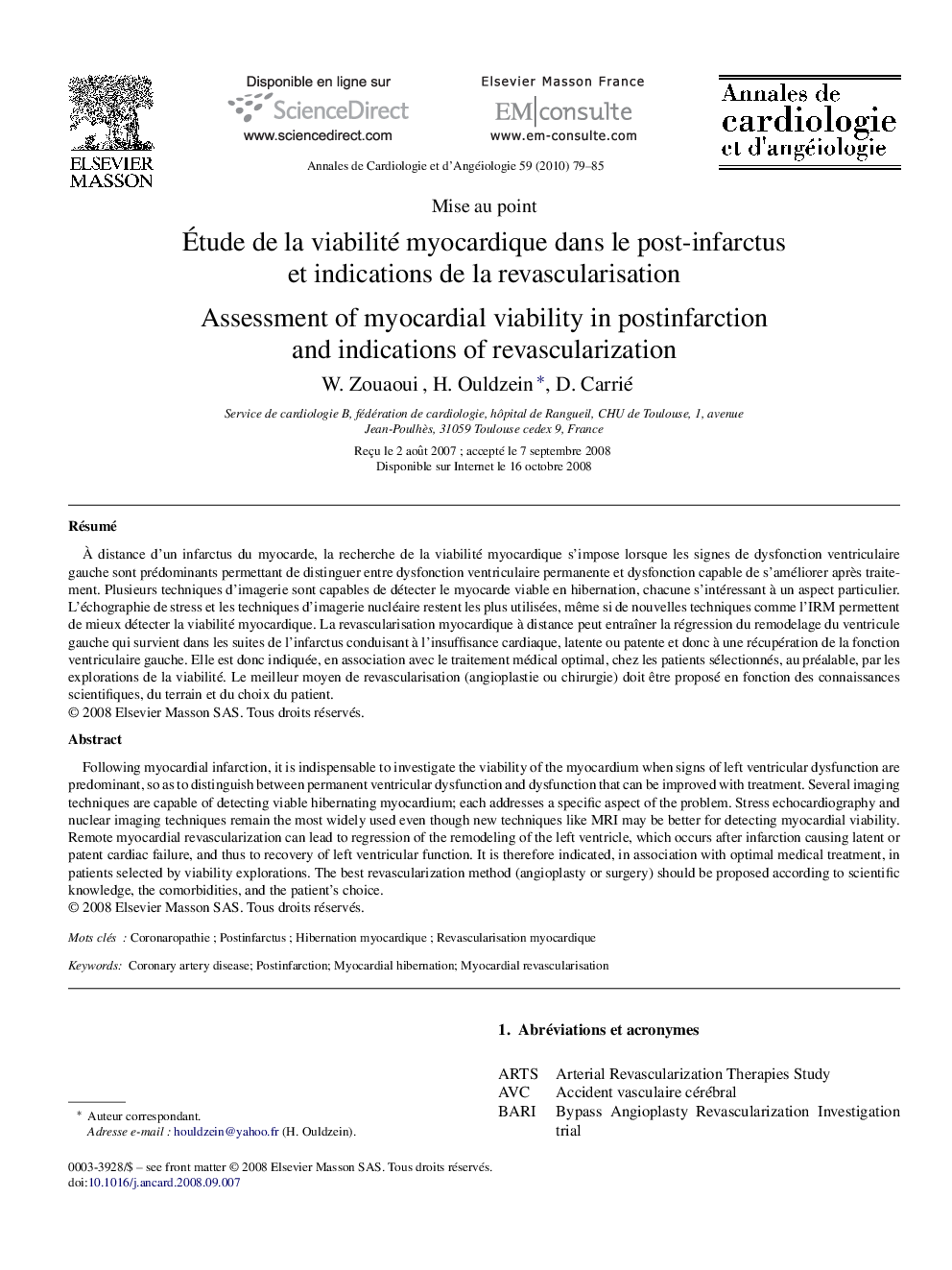| Article ID | Journal | Published Year | Pages | File Type |
|---|---|---|---|---|
| 2869365 | Annales de Cardiologie et d'Angéiologie | 2010 | 7 Pages |
RésuméÀ distance d’un infarctus du myocarde, la recherche de la viabilité myocardique s’impose lorsque les signes de dysfonction ventriculaire gauche sont prédominants permettant de distinguer entre dysfonction ventriculaire permanente et dysfonction capable de s’améliorer après traitement. Plusieurs techniques d’imagerie sont capables de détecter le myocarde viable en hibernation, chacune s’intéressant à un aspect particulier. L’échographie de stress et les techniques d’imagerie nucléaire restent les plus utilisées, même si de nouvelles techniques comme l’IRM permettent de mieux détecter la viabilité myocardique. La revascularisation myocardique à distance peut entraîner la régression du remodelage du ventricule gauche qui survient dans les suites de l’infarctus conduisant à l’insuffisance cardiaque, latente ou patente et donc à une récupération de la fonction ventriculaire gauche. Elle est donc indiquée, en association avec le traitement médical optimal, chez les patients sélectionnés, au préalable, par les explorations de la viabilité. Le meilleur moyen de revascularisation (angioplastie ou chirurgie) doit être proposé en fonction des connaissances scientifiques, du terrain et du choix du patient.
Following myocardial infarction, it is indispensable to investigate the viability of the myocardium when signs of left ventricular dysfunction are predominant, so as to distinguish between permanent ventricular dysfunction and dysfunction that can be improved with treatment. Several imaging techniques are capable of detecting viable hibernating myocardium; each addresses a specific aspect of the problem. Stress echocardiography and nuclear imaging techniques remain the most widely used even though new techniques like MRI may be better for detecting myocardial viability. Remote myocardial revascularization can lead to regression of the remodeling of the left ventricle, which occurs after infarction causing latent or patent cardiac failure, and thus to recovery of left ventricular function. It is therefore indicated, in association with optimal medical treatment, in patients selected by viability explorations. The best revascularization method (angioplasty or surgery) should be proposed according to scientific knowledge, the comorbidities, and the patient’s choice.
